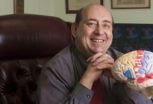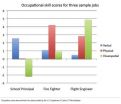New drug could help stop the spread of disease during cough: U of A research
2010-09-22
(Press-News.org) What if there was a drug that could completely eliminate airborne disease transmission that occurs when someone coughs? Researchers at the University of Alberta believe they have found a way to achieve this.
The idea behind this work came from Malcolm King and his research associate Gustavo Zayas, who work in the Division of Pulmonary Medicine at the U of A's Faculty of Medicine & Dentistry. King and Zayas developed a drug that, when inhaled, would reduce or eliminate the amount of droplets, called bioaerosol, coming out of the mouth when a disease-infected person coughs. These airborne particles can stay in the air for minutes and sometimes even hours.
In order to help perfect this drug King and Zayas enlisted in the expertise of PhD student Anwarul Hasan and associate professor Carlos Lange, both from the Faculty of Engineering's mechanical engineering department. It was Hasan and Lange's role to find out how the size and amount of the cough-emitted droplets are affected by the new drug.
After five years of research, using a simulated cough machine, Hasan discovered how the new drug can manipulate the properties of the lung fluid to almost completely suppress the emission of droplets, a research first. This discovery provides a clear target for the new drug in its early phases of development.
King and Zayas are moving forward to develop the drug in the form of a spray and plan to perform clinical trials in hopes that one day this drug could not only help stop the spread of a pandemic outbreak, but also protect nurses, doctors and other front-line health care professionals.
INFORMATION:
This research was recently published in the journal Non-Newtonian Fluid Mechanics and can be found here: http://dx.doi.org/10.1016/j.jnnfm.2010.07.005.
END
ELSE PRESS RELEASES FROM THIS DATE:
2010-09-22
Scientists are reporting the development and successful initial testing of a new form of methotrexate — the mainstay anticancer drug — designed to be given as nose drops rather than injected. It shows promise as a more effective treatment for brain cancer, they say. The report appears in ACS' Molecular Pharmaceutics, a bi-monthly journal.
Tomotaka Shingaki and colleagues note that brain cancer is difficult to treat, partly because current anticancer drugs have difficulty reaching the brain. That's because the so-called blood-brain barrier (a protective layer of cells ...
2010-09-22
We've all heard the saying about people who can't walk and chew gum at the same time, but it turns out that walking and talking is difficult enough, especially for people with Parkinson's disease who are at increased risk for falls with injury.
A new Florida State University study found that older adults with Parkinson's disease altered their gait — stride length, step velocity and the time they spent stabilizing on two feet — when asked to perform increasingly difficult verbal tasks while walking. But the real surprise was that even older adults without a neurological ...
2010-09-22
The antibacterial ingredient in some soaps, toothpastes, odor-fighting socks, and even computer keyboards is pointing scientists toward a long-sought new treatment for a parasitic disease that affects almost two billion people. Their report on how triclosan became the guiding light for future development of drugs for toxoplasmosis appears in ACS' monthly Journal of Medicinal Chemistry.
In the study, Rima McLeod and colleagues point out that toxoplasmosis is one of the world's most common parasitic infections, affecting about one-third of the world population, including ...
2010-09-22
Researchers from the Cardiac & Vascular Institute at NYU Langone Medical Center will present at the Transcatheter Cardiovascular Therapeutics (TCT) 2010 scientific symposium on September 21-25, 2010 in Washington, DC. They will be available for interviews during the conference.
Louis Miller, MD
Interventional Cardiology Fellow, Department of Medicine, Leon H. Charney Division of Cardiology at NYU Langone Medical Center
Wednesday, September 22, 2010
Presenter
•Very Long-term Clinical Follow-up After Fractional Flow Reserve-Guided Coronary Revascularization, ...
2010-09-22
An unusual substance known as "dry water," which resembles powdered sugar, could provide a new way to absorb and store carbon dioxide, the major greenhouse gas that contributes to global warming, scientists reported at the 240th National Meeting of the American Chemical Society. The powder shows bright promise for a number of other uses, they said. It may, for instance, be a greener, more energy-efficient way of jump-starting the chemical reactions used to make hundreds of consumer products. Dry water also could provide a safer way to store and transport potentially harmful ...
2010-09-22
COLUMBIA, Mo. – Although obesity is a major risk factor for disease, much of the threat may be associated with the metabolic (or cardiometabolic) syndrome, a cluster of risk factors related to diabetes and heart disease. Losing weight can improve health and reduce many of these risk factors. However, many people struggle to keep the weight off long-term. Now, researchers at the University of Missouri have found that people who perform resistance training while regaining weight can help maintain strides in reducing their risks for chronic disease.
"Long-term weight loss ...
2010-09-22
Imagine devices that capture electricity from the air — much like solar cells capture sunlight — and using them to light a house or recharge an electric car. Imagine using similar panels on the rooftops of buildings to prevent lightning before it forms. Strange as it may sound, scientists already are in the early stages of developing such devices, according to a report at the 240th National Meeting of the American Chemical Society.
"Our research could pave the way for turning electricity from the atmosphere into an alternative energy source for the future," said study ...
2010-09-22
Portable devices that use a laser beam to probe bones, teeth, and other parts of the body for early signs of diseases like osteoporosis and tooth decay may seem like something out of science fiction. But those devices are moving closer to reality, according to an article in the current issue of Chemical & Engineering News (C&EN), ACS' weekly newsmagazine.
C&EN Senior Editor Celia Henry Arnaud notes that these new diagnostic tools will have the ability to see beneath the skin and detect disease, without exposing patients to X-rays. They embrace a technology that involves ...
2010-09-22
Toronto, Canada – In an international study of patients with a devastating type of dementia that often strikes in middle age, researchers have found intriguing evidence that career choice may influence where the disease takes root in the brain.
The study was led by Baycrest's Rotman Research Institute in collaboration with the Memory and Aging Centre at the University of California, San Francisco and several U.S. and European clinical sites. It appears online today in the Article in Press section of the journal Neuropsychologia, ahead of publication.
Researchers ...
2010-09-22
A study led by St. Jude Children's Research Hospital investigators links the muscle weakness and other symptoms of a rare neurodegenerative disease to a misstep in functioning of a normal protein, rather than its build-up inside cells. The finding offers insight into the mechanism driving common nervous system disorders like Parkinson's and Alzheimer's diseases.
The work advances understanding of how the inherited mistake at the heart of spinobulbar muscular atrophy (SBMA) leads to the death of neurons in the brain and spinal cord. Investigators showed that the underlying ...
LAST 30 PRESS RELEASES:
[Press-News.org] New drug could help stop the spread of disease during cough: U of A research


